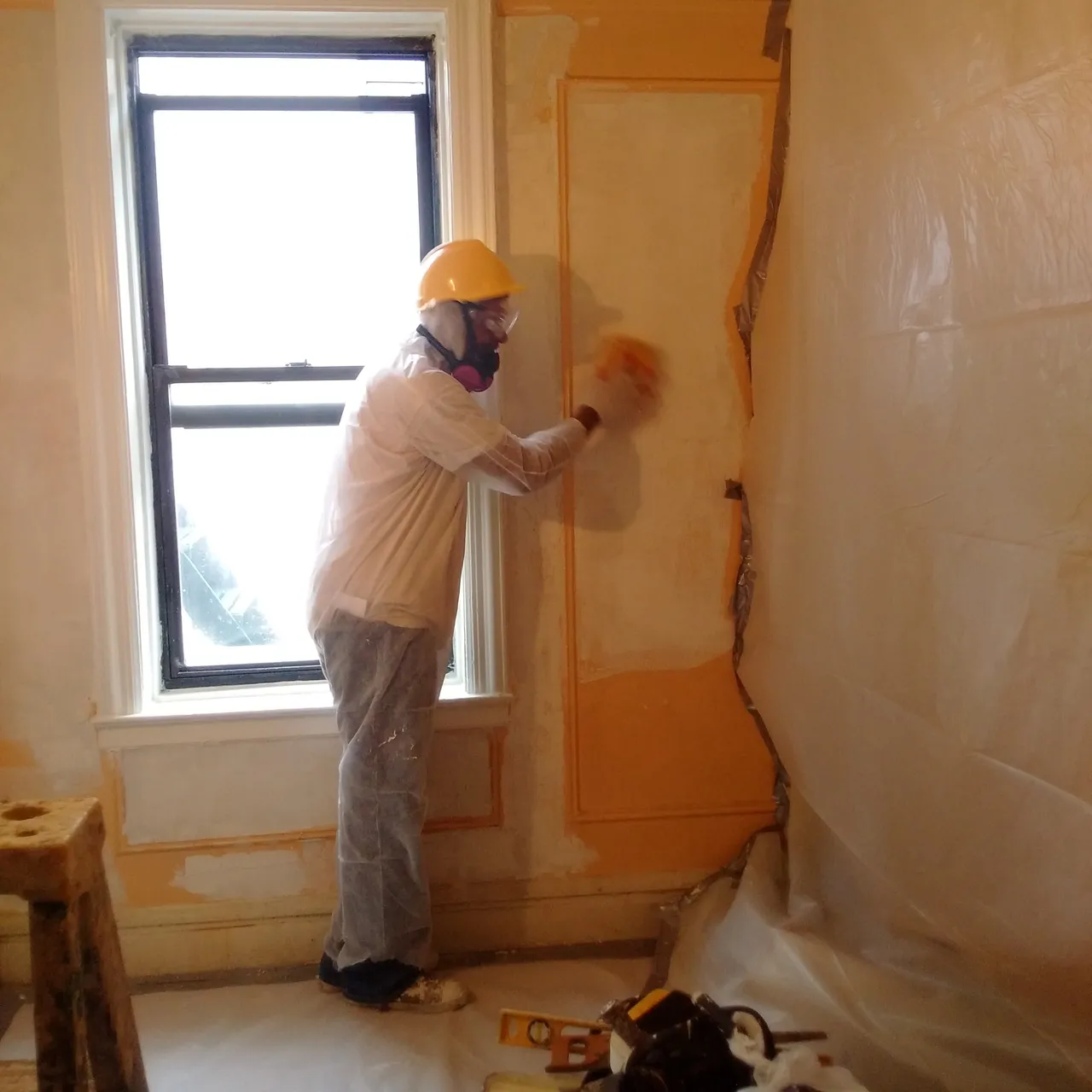Expert Lead Paint Removal Company-- Offering All NYC Boroughs
Expert Lead Paint Removal Company-- Offering All NYC Boroughs
Blog Article
Necessary Devices and Approaches for Reliable Lead Violation Clean-up
Dealing with lead offenses successfully demands a comprehensive approach that blends the right tools with tactical methods. Simultaneously, the use of specialized clean-up devices, such as HEPA vacuums and lead-specific cleansing representatives, is necessary for detailed pollutant removal. Reliable containment approaches, consisting of plastic sheeting and unfavorable air stress systems, are necessary to prevent the spread of hazardous products.
Personal Safety Devices
Individual safety devices (PPE) is an important part in the reliable monitoring of lead contamination clean-up. PPE acts as an important barrier, securing employees from the unsafe results of lead exposure, which can cause severe health consequences. The important PPE for lead cleaning includes respirators, safety apparel, handwear covers, and eye defense. Each kind of devices is specifically created to mitigate different risks connected with lead fragments and dirt.
Respirators, especially those equipped with HEPA filters, are vital for filtering air-borne lead particles, protecting against inhalation. Protective garments, consisting of coveralls and disposable fits, prevents lead dirt from adhering to employees' garments, minimizing the danger of secondary contamination.
Moreover, extensive training on the correct use and maintenance of PPE is important. Workers must be informed on donning and doffing procedures to stay clear of contamination. Regular evaluations and substitutes of PPE parts are essential to keep their protective abilities, guaranteeing a risk-free and compliant cleanup procedure.
Specialized Cleaning Devices

An additional vital tool is the wet/dry vacuum cleaner, which can properly tidy up both dust and liquid contaminants. These vacuums usually feature HEPA filters to offer an added layer of safety and security. Wet cleans or tack cloths are additionally vital for surface area cleansing; they are particularly created to capture and hold lead bits, lowering the risk of spreading out contamination.
For even more persistent deposits, specialized lead-removal cleaner are called for. These agents are created to damage down lead particles, making them simpler to eliminate. Scrub brushes with durable bristles can aid in this process, particularly on rough surface areas where lead dust tends to adhere a lot more highly.
Furthermore, encapsulants are used to seal lead-contaminated surface areas, stopping the launch of lead dirt. These specialized paints and coatings are made to adhere to various substratums, supplying a long-lasting option for lead containment.
Reliable Containment Techniques
Efficient containment approaches are vital in mitigating the spread of lead contamination throughout clean-up activities. Implementing durable containment methods ensures that lead fragments do not migrate to unaffected locations, thus safeguarding both employees and the atmosphere (DOH & HPD Lead Violation Removal NYC).

To boost containment, encapsulants can be related to surfaces that are not being gotten why not try this out rid of or interrupted. These specialized finishings bind lead dirt, reducing its schedule for resuspension. Additionally, all workers must use ideal Individual Protective Equipment (PPE), consisting of respirators and disposable fits, to avoid contamination spread.
Safe Disposal Practices
Making certain risk-free disposal techniques is a crucial element in the management of lead contamination cleanup. Appropriate disposal reduces the risk of lead coming back the setting and endangering public health and wellness (DOH & HPD Lead Violation Removal NYC).
Transferring lead waste requires adherence to rigorous standards. Making use of certified contaminated materials providers ensures that the products are managed properly. Documentation, consisting of shows up describing the type and amount of waste, must come with shipments to track the waste from the website of origin to its last disposal destination.
Designated hazardous waste disposal facilities his explanation are equipped to take care of lead-contaminated materials securely. These facilities typically employ advanced techniques such as stabilization, solidification, or chemical therapy to neutralize the lead prior to disposal. Landfilling in specialized, lined locations that prevent leachate from contaminating groundwater is a common technique for final disposal.
Regular training for employees associated with lead garbage disposal is essential to maintain security requirements and protect against unintended direct exposure. By sticking to these try this website techniques, organizations can considerably lower the environmental and wellness influences connected with lead contamination.
Regulatory Conformity Tips

Abiding by regulatory compliance is paramount in the successful implementation of lead contamination cleaning. Understanding and adhering to federal, state, and neighborhood regulations ensures not just the safety and wellness of people however also the lawful and monetary well-being of the cleaning organization. The Epa (EPA) sets stringent requirements, such as the Lead Renovation, Repair Work, and Painting (RRP) Rule, which mandates correct accreditation and training for specialists taking care of lead-based activities.
Conformity starts with a complete evaluation of suitable legislations and guidelines. Organizations must remain updated on any type of legal adjustments, which can be assisted in via normal training sessions and signing up for market updates. Documentation is another essential compliance facet; keeping comprehensive documents of all activities, including examination reports, worker training logs, and disposal manifests, is important.
Moreover, engaging with accredited lead assessors or risk assessors makes certain that lead dangers are correctly identified and reduced. Employers need to apply using Personal Safety Tools (PPE) and ensure that safety procedures are purely complied with. Transparent interaction with stakeholders, including staff members, clients, and regulatory bodies, will foster a society of compliance and responsibility, eventually adding to a much safer and much more efficient lead cleanup process.
Verdict
Effective lead offense cleanup demands the assimilation of specialized devices and tactical techniques to make sure security and efficacy. Personal safety devices (PPE) safeguards employees from direct exposure, while secure disposal methods and strict adherence to regulatory compliance are vital for sensibly managing unsafe waste.
Report this page